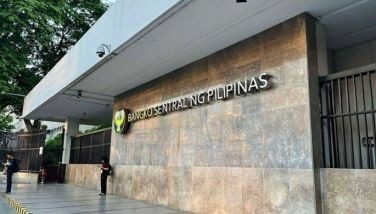DA seeks to revive yearly grants from Canada
January 7, 2003 | 12:00am
The cash-strapped Department of Agriculture (DA) is seeking to revive the million-dollar yearly commodity grants it used to get from the Canadian International Development Agency (CIDA).
The DA is initiating moves to resolve its strained relationship with the CIDA some five years after the latter stopped releasing grants to the Philippine government which failed to provide counterpart funding for the projects approved under the grants.
Elgie Namia, special projects chief of the National Agricultural and Fisheries Council (NAFC), the DA unit which monetizes commodity grants, said the agency is initially working on coming up with projects worth P46.8 million which forms part of the counterpart funds the Philippine government was supposed to raise years back.
"We are going to revive the CIDA grant but we have to have projects whose financing would be equivalent to NAFC’s unpaid obligations to CIDA," said Namia.
The Philippines got its last commodity grant from CIDA in the mid 1990s, most of which were used to finance agriculture and fisheries-based projects.
CIDA severed it ties with the DA and NAFC after the Philippine government defaulted on several compliance requirements, including the DA’s failure to remit to the National Treasury under CIDA’s account, the cash proceeds of fertilizer grants.
Namia said a portion of the fertilizer grants were sold to the state-owned Philippine Phosphate Fertilizer (Philphos) which later refused to settle its loan.
Instead, Philphos proposed that its debts be settled through an offsetting scheme with the DA which at that time owed the fertilizer firm. The DA assumed the debts, but was not able to raise funds that should have been paid to CIDA.
Aside from Philphos, there are other project beneficiaries that failed to pay the cash proceeds of the fertilizer grant to the DA.
The CIDA is the source of one of three grants the DA gets every year. The other two grants come from the United States Department of Agriculture’s PL 416 program which last year released $8.4 million in the form of a rice commodity grant, and a Japanese commodity grant worth about $8 million also in the form of fertilizer.
Commodity grants involve the export of surplus goods from other countries to the Philippines which government monetizes, and the proceeds of which are to be used to finance agriculture and fishery projects.
The DA is initiating moves to resolve its strained relationship with the CIDA some five years after the latter stopped releasing grants to the Philippine government which failed to provide counterpart funding for the projects approved under the grants.
Elgie Namia, special projects chief of the National Agricultural and Fisheries Council (NAFC), the DA unit which monetizes commodity grants, said the agency is initially working on coming up with projects worth P46.8 million which forms part of the counterpart funds the Philippine government was supposed to raise years back.
"We are going to revive the CIDA grant but we have to have projects whose financing would be equivalent to NAFC’s unpaid obligations to CIDA," said Namia.
The Philippines got its last commodity grant from CIDA in the mid 1990s, most of which were used to finance agriculture and fisheries-based projects.
CIDA severed it ties with the DA and NAFC after the Philippine government defaulted on several compliance requirements, including the DA’s failure to remit to the National Treasury under CIDA’s account, the cash proceeds of fertilizer grants.
Namia said a portion of the fertilizer grants were sold to the state-owned Philippine Phosphate Fertilizer (Philphos) which later refused to settle its loan.
Instead, Philphos proposed that its debts be settled through an offsetting scheme with the DA which at that time owed the fertilizer firm. The DA assumed the debts, but was not able to raise funds that should have been paid to CIDA.
Aside from Philphos, there are other project beneficiaries that failed to pay the cash proceeds of the fertilizer grant to the DA.
The CIDA is the source of one of three grants the DA gets every year. The other two grants come from the United States Department of Agriculture’s PL 416 program which last year released $8.4 million in the form of a rice commodity grant, and a Japanese commodity grant worth about $8 million also in the form of fertilizer.
Commodity grants involve the export of surplus goods from other countries to the Philippines which government monetizes, and the proceeds of which are to be used to finance agriculture and fishery projects.
BrandSpace Articles
<
>
- Latest
- Trending
Trending
Latest
Trending
Latest
Recommended



























